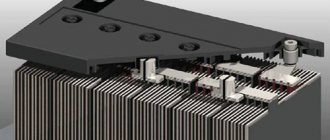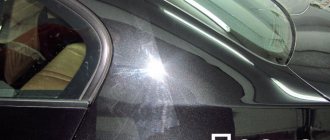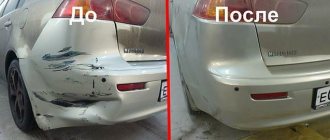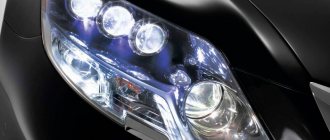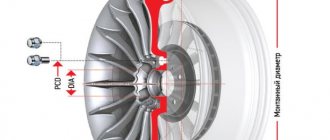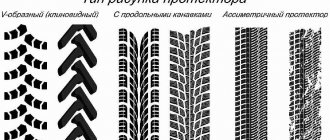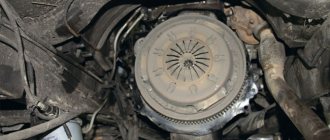Winter makes its unexpected adjustments not only to the daily lives of people, but also to the operation of cars.
Studded tires, during certain winter months, can become a necessity for motorists. Of course, most drivers prefer to buy such wheels in a store, but there are also many for whom tucking winter tires with their own hands is not a problem. There may be several reasons why people prefer to do what a tire manufacturer does themselves. But the main reason why experienced drivers, for whom a car is like an open book, prefer their studded tires to factory ones lies in the desire to create tires for themselves. And, of course, last but not least, standard tires are not bought due to their high price and often poor workmanship.
If you decide to install studs on your tires yourself, keep in mind that this is a fairly costly process, both in terms of time and labor. There are rubber on the market with ready-made holes for studs. It is much easier to equip it with spikes than those wheels in which you need to make them yourself.
Is it possible to stud tires yourself?
The studs are sold independently, in your own garage, without expending financial or physical effort.
To work, you will need a standard set of tools for studding tires, and you can’t do without a set of winter tires:
- Thorns;
- Pliers;
- Pneumatic pistol.
At the moment, literally every car shop is ready to offer assistance in finding tires with ready-made holes into which purchased studs can be inserted independently. This will make the studding process easier.
2 types of studs: single- and double-flange. The first version of studs is intended for standard driving on city roads, the second version of studs is for high-speed driving.
Do you want to insure your car with maximum benefits? Find out what CASCO with a franchise is and what its advantages are from this article.
Every motorist should know how to choose spark plugs for a car and not make a mistake.
Fuel saving magnets are one of the most touted cost-saving measures. Do they work - see here.
Don’t forget that winter tires can be studded due to the presence of rubber density to hold the metal frame.
It is advisable to choose rubber with a special hole already in the basic configuration, so that you can install studs without difficulty - this option is more reliable and durable. Carefully check that the nests go evenly, forming a pattern (herringbone, zigzag, stripes). Otherwise, there is a high probability that makeshift preparation will reduce safety and reliability. A point to note is that you need to apply studs on new tires yourself - on worn tires, the metal inserts will not be able to hold them in the broken seating recesses.
It is recommended to carry out studding with regular tires, without indentations - however, the product may be damaged to the point of being completely unusable. The holes for the tenons are created using high-tech equipment. At home, drills with flexible rotation control are suitable. During further work, equipment is used depending on needs and priorities.
Insert studs into the tire, methods for installing studs
- Completely manual. The advantage is accessibility to every consumer, the disadvantage is the high labor intensity of studding.
- Semi-automatic. The speed of work is much higher, but you should carefully monitor the correct position of each individual spike.
- Fully automatic. The spikes are driven in under great pressure. Advantages: reduced labor intensity of this activity and excellent fixation strength; disadvantages: high cost of the equipment.
In any case, the choice is yours, but it is irrational to purchase an expensive set of pneumatic equipment for one vehicle - it will come in handy if there are several cars in the family. In other cases, experts advise sticking with the semi-automatic method.
Choosing tires and studs for studding tires
Despite the insignificance of choice, today they purchase from dozens of other types of studs installed on winter tires. At the same time, it is very important to approach the acquisition seriously. Considering our regional weather conditions, and our quality of roads, it is best to choose an option made from iron-containing alloys. Aluminum studs will not deform after the first couple of rides on a village road with potholes and bumps. In addition, the studs should be selected in accordance with the shape of the carbide tip, which protrudes outward from the rubber. In this case, traditional round ones are quite cheap, so they are called effective only with a stretch.
If we take into account the more severe climate of the northern European regions, then it is worth talking about 4-sided and multi-sided studs, which allow you to have confidence in reliability even if you cross an icy road.
Recently, there has been an increase in interest in diamond varieties of studs. Their cost cannot be said to be more than 10% of the usual ones. It's all about the complex shape of the tip, which is visually similar to the crystal structure.
In this purchasing situation, think about the choice of studs. 50% of motorists ask questions about the number of flanges. The sample agrees with this parameter: in the case of constant driving, it is worth paying attention to 2-flange models due to the fact that they are more resistant to maneuvering and driving at high speed. The situation is the opposite with single-seam models: they are cheaper and slow down the wear of the seat recess, however, in the case of active driving, the situation is unprofitable. The selection of studs also occurs according to the dimensions - take into account the max. protrusion size up to 1.3mm. Because of this, it is best to buy your studs from the same place as your tires.
Choice of studs
There are different spikes, but round, diamond-hexagonal, diamond and faceted-diamond, seven-sided ones are considered to be of better quality. The most universal ones are round, they are easier to find in stores. Diamond-hexagonal ones are not much different from round ones: only with a cushion that allows you to move silently. Diamonds are expensive, but this is their only drawback. Faceted diamonds are usually found on Continental tires and have good grip on the road surface. Heptagonal ones are used on sports cars because they can be used to start quite quickly. The remaining types wear out quickly and are similar to the round ones, although the oval ones are necessary when there is ice on the road.
To stud winter tires, it is important to consider the material from which the studs are made. Soft alloys will quickly lose their shape if the driving style is harsh, so iron parts are better suited. It is also important how they are attached to the rubber. For this, multi-flange or double-flange ones are more suitable, which have 2 extensions at the base, which increases the reliability of fixation.
Do-it-yourself studding process
In order to cope with the process on your own, you must follow a clear algorithm of actions, without which all attempts may be in vain.
- First of all, work begins with fixing the tire. In this case, you need to resort to the help of improvised means (tools). Here it is worth paying special attention to the fact that the quality of your work will directly depend on the level of fixation and fastening of the splint.
- The next step is to wet the spikes with soapy water. Yes, at first glance this may seem crazy, but this will allow the studs to easily pass through all the holes in the tire. Beforehand, we place the spikes in a pneumatic gun and point them at the previously made holes on the tires. The pneumatic gun should be held parallel to the plane, and pressure should be applied until the spikes are completely driven into the tire.
- Spikes whose installation did not go smoothly (distortions, unevenness, rolls) will need to be removed. In the case of protrusions of inserted tenons, you will need to resort to a hammer and an aluminum sheet, with which you will try to drive it inside.
- Having dealt with the stud, you should not carry out direct testing right away. You should wait a little while the thorns “grow together”. This will take at least a month. When driving, the driving speed on new studded tires does not exceed 60 km/h. After rolling away 200-300 km, gradually increasing the speed to 85 km/h, not forgetting the maximum permissible level.
- It is worth remembering the following point. When the studded tires are ready, look closely at the protrusions of the tips. In case of unevenness, remove with pliers or drive in non-standard (1.3 mm) spikes inside. A hammer and a metal plate can do just that.
Don't worry if two or three studs get lost during the running-in process. This will not affect movement.
Studring - tools
The most important device for studding tires, without which independent work will become pointless, is an air gun and, naturally, a compressor to power it.
The gun uses special claws to expand the hole in the tire and drive a spike into it. To make holes in regular tires, you need to use a tubular drill - all the rubber crumbs will remain in it and then you can do without blowing out the seats for the studs. Be sure to limit the depth to which you drill holes. Otherwise, then the spikes will stick out of the wheel in different ways, and some will be completely buried and will be of little use.
You also need to choose a drill wisely. To make holes you need to have a high-speed tool with a good cooling system. After all, you need a lot of holes and a simple drill will soon overheat. Also useful on the farm is a small aluminum plate and a hammer. With these two simple tools, you will adjust the protrusion of the tip. In addition, you may need pliers to remove incorrectly seated spikes.
Bottom line
You can stud tires yourself, but this procedure must be carried out especially carefully. Remember that studded tires require running-in and careful maintenance, so try not to rush and do not skimp on materials.
Dear readers! We constantly write relevant and interesting materials for our online magazine ProCrossover, subscribe to our channel in Yandex-Zen!
Dear readers! We constantly write relevant and interesting materials for our online magazine ProCrossover, subscribe to our channel in Yandex-Zen!
Preparatory work, how to prepare a wheel for studding
In any case, the tire is first treated with a soap solution, which allows it to be cleaned as much as possible and facilitates the entry of the spike into the socket. This can be done with a household sponge, but it is better to use a pneumatic sprayer, which allows the solution to penetrate into each hole. Studring of winter tires is done as carefully as possible - you need to make sure that not a single metal product is warped. If it is impossible to achieve an even installation, the spikes are removed using pliers. At the same time, they should be swung in different directions. Uneven installation using an air gun often leads to rupture of the mounting hole. In this case, they simply let it pass, since after a few kilometers the spike will be lost.
Do I need to stud both wheels?
When winter is very changeable and snowfalls are replaced by slush, only the front wheel can be studded. It is responsible for controllability, but the load on it is much less. Therefore, the spikes will not wear out very much if you drive, for example, on bare asphalt. When the rear wheel skids on ice, it is not as dangerous as the front wheel. In general, do-it-yourself studding of winter tires provides more opportunities than a finished product. However, if you have money for branded protectors, and they meet all the requirements, then, of course, it is more convenient to purchase them.
Having coated the tires with metal studs once, the cyclist will know exactly what to change in future models. The whole difficulty of the first choice lies in the fact that there is no clear answer to the question of what kind of studs there should be and how many to screw them in. It all depends on the specific skiing area. However, as practice shows, if such wheels are not needed for a highly specialized sports discipline, then it is better to make universal ones.
So, the article describes how to stud tires with your own hands, and what you should pay attention to. This method is the most universal and is suitable for any coating. Having studded the tread using this method, it will be possible in the future to more clearly understand what to change for better grip in a specific riding area. One thing can be said for sure: that rubber that has metal studs installed will always be better in cold weather than one that is not equipped with them.
Restoring studs on winter tires - effective methods for resuscitating tires
Do they give mortgages to low-income people without a husband?
In Chuvash, they increased the pension for the loss of the breadwinner
How to go on vacation outside of the vacation schedule
Can dad apply for alimony?
How long does a girl need to work for maternity leave?
The following tools and materials will be required:
- self-tapping screws with round wide heads;
- a screwdriver, preferably a fast and professional one;
- spray bottle with soap solution.
Tires can be either new or used. These studs can even be installed on bald tires. This method is simple to the point of primitiveness, so almost anyone can cope with the procedure.
We treat a small area of rubber with a soap solution inside and outside.
After this, we begin to screw in the screws from the inside.
You need to run the tires in a gentle mode for approximately the first 300–350 kilometers. Otherwise, there is a risk that the spikes will fly out of their sockets. If this happens, do not try to return them to their previous places - they will no longer be able to hold on normally.
Important
If you need to remove damaged spikes, you will have to use special tools - wrenches.
By adhering to the recommendations given here, you can not worry about the operation of your car regardless of the quality of the road surface. The installation of such tires, which are indispensable in winter, is carried out by many specialized car services. However, you can save money if you buy or rent a special pistol. If you have some diligence and a free day, this procedure can be done with your own hands
. We will say goodbye for today, dear subscribers.
Manual tenoning device diagram
- metal;
- aluminum;
- in a plastic case.
It is important to choose quality studs from a reputable brand
The shape can be oval, tetrahedral, with several flanges. The most famous brands on the market today are Nokian and Gislaved. Most often, single-flange oval studs are chosen for manual tenoning, as they are easier to install
. If the car is operated in difficult weather conditions on a poor-quality surface, then it is better to choose double-flange products.
Well, now about the skating itself
Even when riding on open ice, the bike rolls as if it were on asphalt. There are no skids, even when cornering. You can easily drive up the hill, where the children made themselves a skating rink, filling it with water, the traction occurs as in the summer. It also goes great in the snow. As for asphalt and slippery stones, everything here depends on how the studs are positioned. Many, knowing that they will ride mainly around the city in winter, do not install screws on the middle row at all. But if there is such a need, then they should not stick out from the rubber by more than 2 millimeters. In general, do-it-yourself studding of winter tires is justified, and its advantages outweigh the disadvantages.

